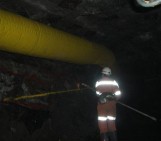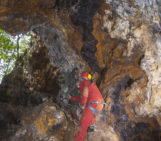
In November 2015, the failure of the Fundão tailings dam in Brazil devastated the surrounding landscape and local villages, killing 19 people and leaving the media filled with images of landslides, fallen infrastructure and ruined livelihoods. The limited communication and lack of relationship between joint operators BHP Billiton and Brazilian company Vale with the surrounding communities exacerbated the event, resulting in close to $50 billion still due for compensation. But how can these relationships and hence the social impacts of such projects improve?
As a geologist now working in environmental consultancy, Alexandra Mitchell, will use a case study from a mining project in Australia to illustrate the importance of community-industry relationships, how geologists can use their scientific background to explain technical aspects of the project, and the resultant positive impacts.
Why are community-industry relationships important?
In 2015, there were close to 2,000 active mine sites around the globe. Many newer mines, as a result of dwindling ore reserves, are increasingly located in remote areas. At the same time, the viability of industrial operations is increasingly reviewed according to environmental and social impacts, meaning mines can no longer solely focus on economic gain but, instead, must incorporate sustainability into their planning.
These changes are driven by a push towards responsible investment by the finance community and a growing interest for projects to develop and maintain a Social Licence to Operate, or SLO. Defined as the ongoing approval and acceptance by a community, the SLO can make or break a company or project. Conversely, the lack of an SLO can have hugely negative economic implications: a poor reputation leads to lower investment and, ultimately, a reduced or cancelled project.
In some cases, local communities have shown such severe angst against a development that billion-dollar operations have been halted. In Chile, for example, the $2.5 billion Dominga copper and iron ore mine and, temporarily, the $4 billion Goldcorp-owned El Morro mine were stopped primarily due to a failure to consult with surrounding communities.
These incidents show that a productive, understanding, transparent, trust-based relationship between company and community is vital. In this context, why do companies continue to fall short in their community relations?
Geologists to the rescue
Community-company relations may be strained by complications relating to the particularly remote location of some projects. For example, increased pressure on potable water supplies, combined with a lack of mining history in newer operational areas, requires effective technical communication with the community.
Exploration geologists have an invaluable opportunity here, as they are often the first people on site and hold a wealth of scientific knowledge that they can share with local people to help them understand issues and voice community concerns.
Another important social challenge faced by mining operators is stakeholder relations; in other words, how the company communicates with not only local communities, but also government officials, NGOs and other relevant organisations.
For example, in rural South Australia, a small zinc mine caused consternation in the community of Strathalbyn, a small town located only 2 km away. The problems began at the project’s inception. At this early stage, the local community knew very little about the industry, and what was known was learnt from media coverage of negative environmental impacts at other mining locations. Although the local people perceived that acid rock drainage, severe noise pollution and other emissions from the mine were a threat to their community, studies confirmed that these concerns were mainly unfounded. Nevertheless, fears and questions remained, and without proper management they could continue to hamper operations at the site.
Today, the main mine operator runs quarterly community meetings with technical experts brought in to answer questions, and hence successfully addresses community concerns. This role is ideal for geologists and mining engineers, especially at the earlier stages of a project, when mitigation measures can be most effective.
Action points
Methods for addressing negative social and environmental impacts in mining will increasingly draw upon interdisciplinary knowledge. Practitioners, such as geologists and mining engineers, have an opportunity to apply their technical knowledge as they engage with local communities, whilst at the same time learning from those they interact with. This evidence-based approach fosters a relationship built upon understanding, lessening the effect of perceived negative environmental and social impacts within communities, which are understood to be as important as real impacts.
In this context, and complemented by best practice guidance, such the Stakeholder Engagement Toolkit provided by the International Council of Metals and Mining (ICMM), geologists and other technical experts could contribute in the following way:
- Instigate early, informal but productive ‘chats’ with local people to gain an understanding of what they know about the industry and what their concerns are.
- Engage in respectful conversations, exercised with patience, to build relationships based upon trust.
- Organise community meetings, with geologists explaining why they are mining there and the significance of the area, as well as addressing commonly perceived negative impacts and how these are planned to be addressed.
- Share a timeline of events and technical aspects with the community, in a transparent manner.
- Develop a grievance mechanism for community members to ask questions or relay their concerns with technical persons to answer or explain, where necessary.
Although communities naturally have concerns, there remains a consensus that mining operations can and do bring economic benefits. When practitioners exercise true community development, rather than only showing some simple cultural awareness, a mine will have a higher chance of success. In other words, staff members must invest time in understanding communities and then acting upon the needs of the community. This will ultimately lead to economic gain, whilst bettering the lives of the surrounding people, but geologists must utilise their wealth of knowledge to talk to important stakeholders.
By Alexandra Mitchell, Graduate Environmental and Social Specialist, Wardell Armstrong LLP



